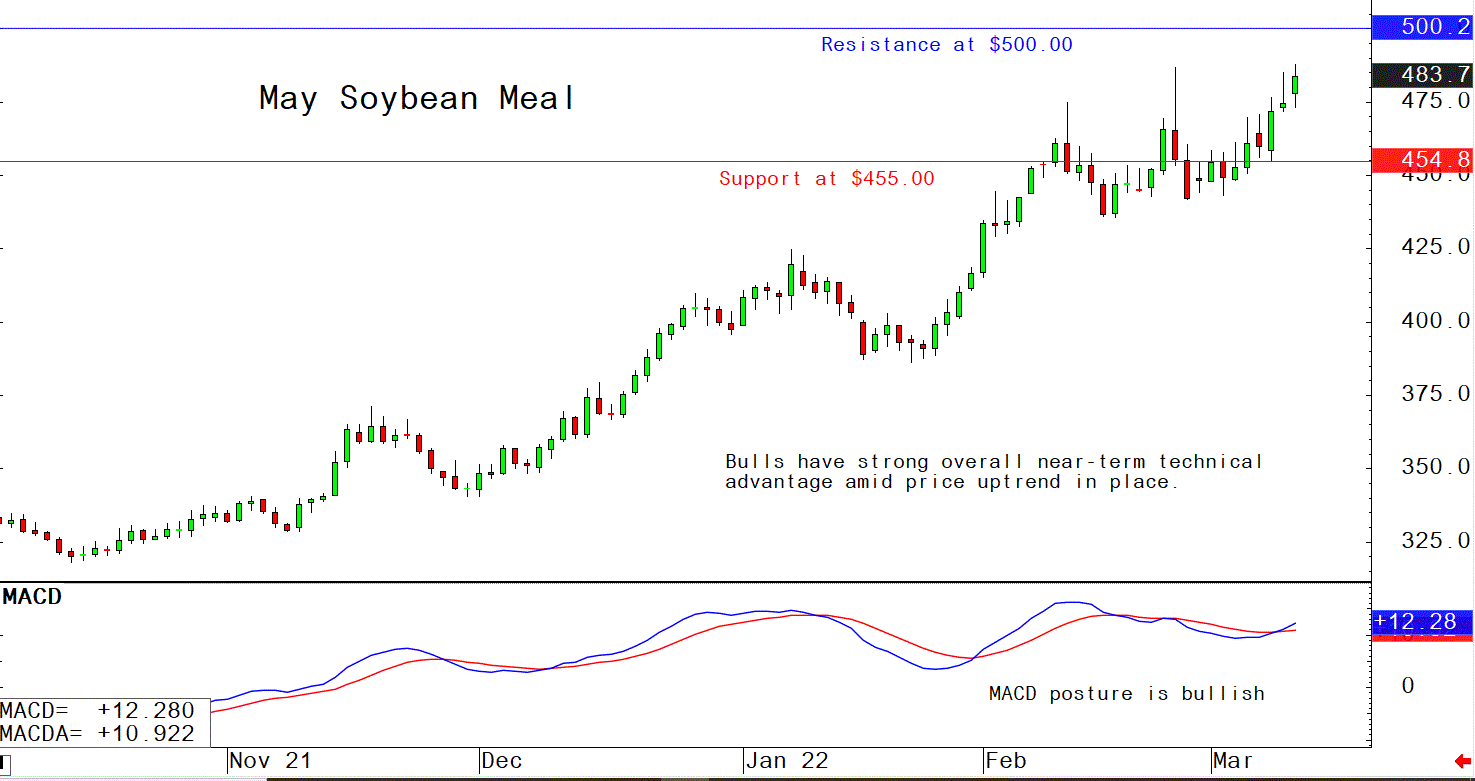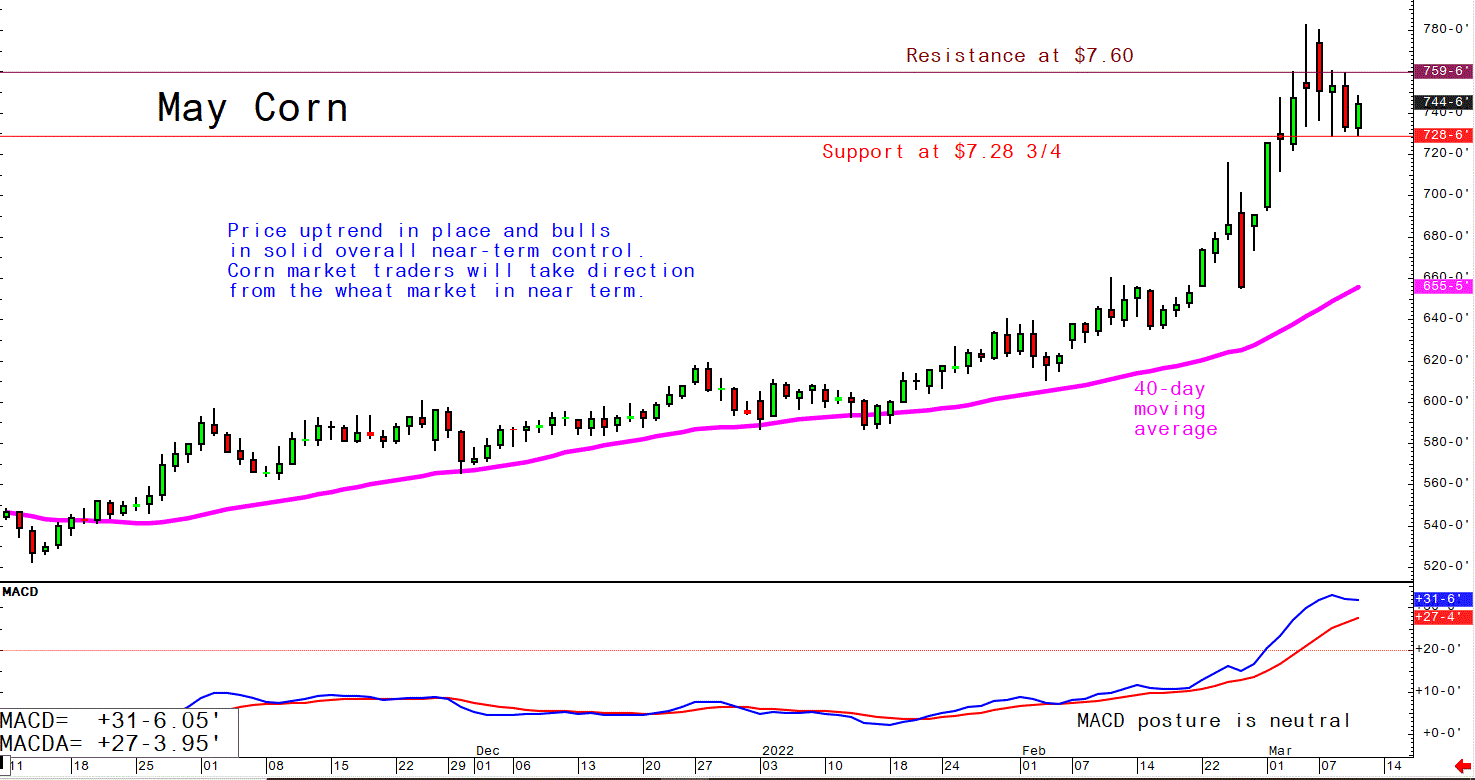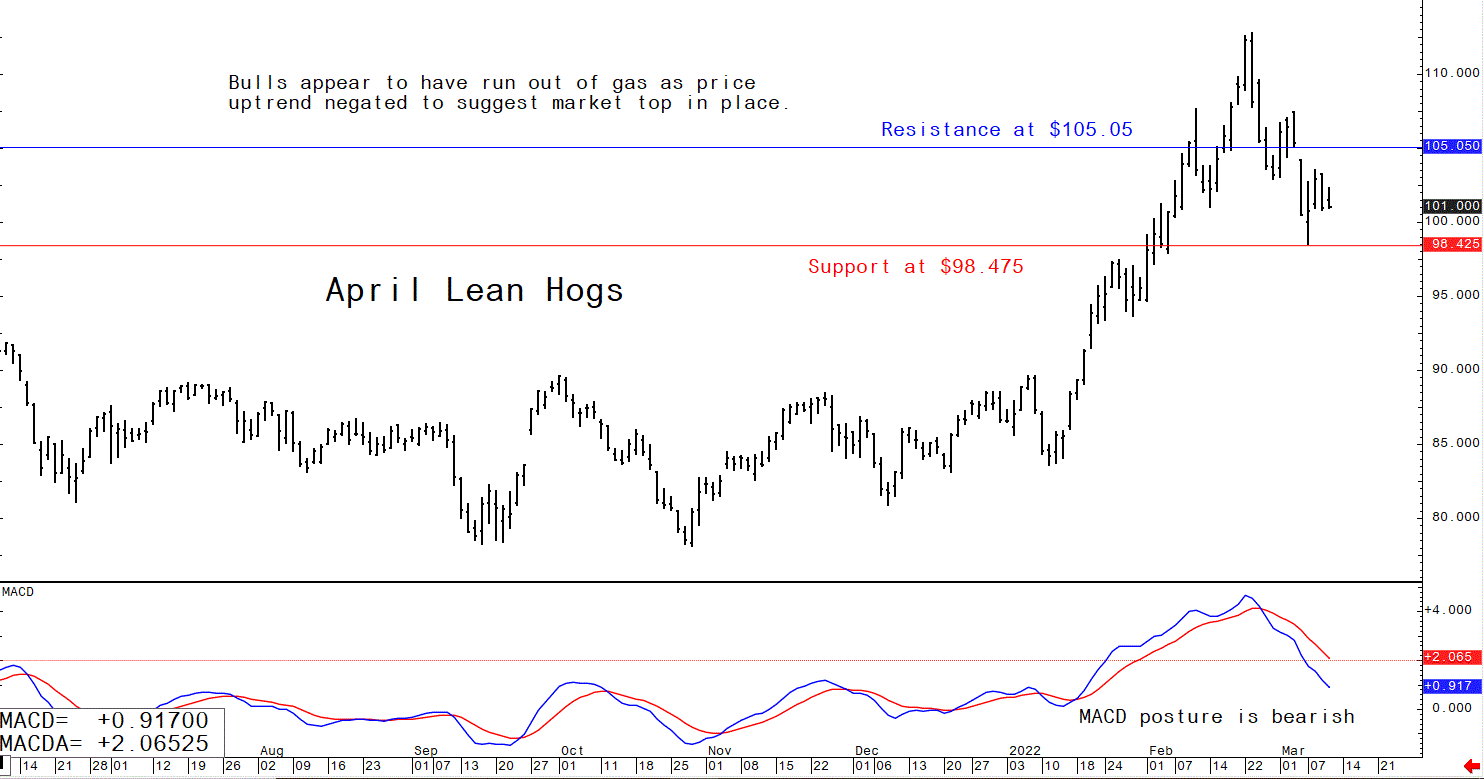



Pig outlook: Lean hog bulls fade; near-term top in place
US lean hog future off Feb highs despite firm cashThe pig traders’ perspective: Lean hog futures have backed well down from the February high and technical chart damage has been inflicted to suggest a market top is in place. This comes despite signs of firmness in the US cash hog and wholesale pork markets. The big lean hog futures drop may have little to do with hog/pork complex fundamentals, as the lean hog traders appear to be focusing on outside markets more closely, such as energies, stock and financial markets. From a seasonal standpoint, the short-term hog and pork outlook is bearish as the hog/pork complex often sees price pressure during March and early April. However, early spring may bring improved pork demand as grilling season gets underway, as well as the traditional seasonal decline in hog supplies into early summer. That routinely drives the cash market to annual highs in late spring or early summer.
Latest US Department of Agriculture (USDA) reports, and other news
US pork export sales down, beef up in latest week
USDA Thursday reported US pork net sales of 25,400 MT for 2022 were down 40 percent from the previous week and 4 percent from the prior 4-week average. Increases primarily for Mexico (12,800 MT, including decreases of 200 MT), China (3,600 MT, including decreases of 300 MT), South Korea (2,100 MT, including decreases of 100 MT), Japan (2,000 MT, including decreases of 500 MT), and Honduras (1,200 MT), were offset by reductions for Chile (100 MT). Exports of 28,500 MT were down 5 percent from the previous week and 6 percent from the prior 4-week average. The destinations were primarily to Mexico (11,900 MT), Japan (5,200 MT), China (3,600 MT), South Korea (2,600 MT), and Canada (1,500 MT).
Beef: Net sales of 27,500 MT for 2022--a marketing-year high--were up 16 percent from the previous week and 36 percent from the prior 4-week average. Increases were primarily for China (10,400 MT, including decreases of 100 MT), Japan (6,400 MT, including decreases of 300 MT), South Korea (3,700 MT, including decreases of 500 MT), Canada (1,300 MT), and Taiwan (1,100 MT, including decreases of 100 MT). Exports of 15,900 MT were down 10 percent from the previous week and 1 percent from the prior 4-week average. The destinations were primarily to South Korea (4,500 MT), Japan (4,100 MT), China (2,600 MT), Taiwan (1,500 MT), and Mexico (1,000 MT).
US hog producer USDA payment recap
US hog producers who sold hogs through a spot market sale during the Covid-19 pandemic have until April 15, to submit their applications for USDA’s Spot Market Hog Pandemic Program (SMHPP). SMHPP is part of USDA’s Pandemic Assistance for Producers initiative and originally had a deadline to submit applications by Feb. 25. SMHPP assists hog producers who sold hogs through a spot market sale from April 16, 2020, through Sept. 1, 2020, the period during which these producers faced the greatest reduction in market prices due to the pandemic. USDA is offering SMHPP in response to a reduction in packer production and supply chain issues due to the Covid-19 pandemic, which resulted in fewer negotiated hogs being procured and subsequent lower market prices. USDA’s Farm Service Agency (FSA) began accepting applications for SMHPP on Dec. 15, 2021. In December, USDA published a notice of funding availability for hog producers who were not able to sell hogs on the spot cash market during the pandemic. USDA Secretary Tom Vilsack previously said when USDA initially set it up, it realized some issues relative to eligibility requirements that created challenges.
Hong Kong detects COVID-19 on imports of Brazilian frozen beef, Polish frozen pork skin
Hong Kong continues to take random tests on imports of chilled and frozen foods and their packaging for the COVID-19 virus. The latest detections were connected to frozen meats’ packaging from Brazil and Poland in February 2022. In 2021, Brazil was the largest supplier of beef and pork products for Hong Kong while Poland ranked as the fifth supplier for pork products.
China’s meat imports plunge in first two months of 2022
China imported 1.1 MMT of meat in January and February, down 33% from the same two-month period last year. An increase in domestic production, especially pork, curbed demand for meat imports.
China to buy more pork for state reserves
China will buy 38,000 MT of pork for state reserves on Thursday. Beijing started buying domestic pork for state reserves last week to support falling hog prices.
The next week’s likely high-low price trading ranges:
April lean hog futures--$98.475 to $105.00, and with a sideways-lower bias
May soybean meal futures--$460.00 to $500.00, and with a sideways-higher bias
May corn futures--$7.00 to $7.82 3/4, and a sideways-higher bias
Latest analytical daily charts lean hog, soybean meal and corn futures










